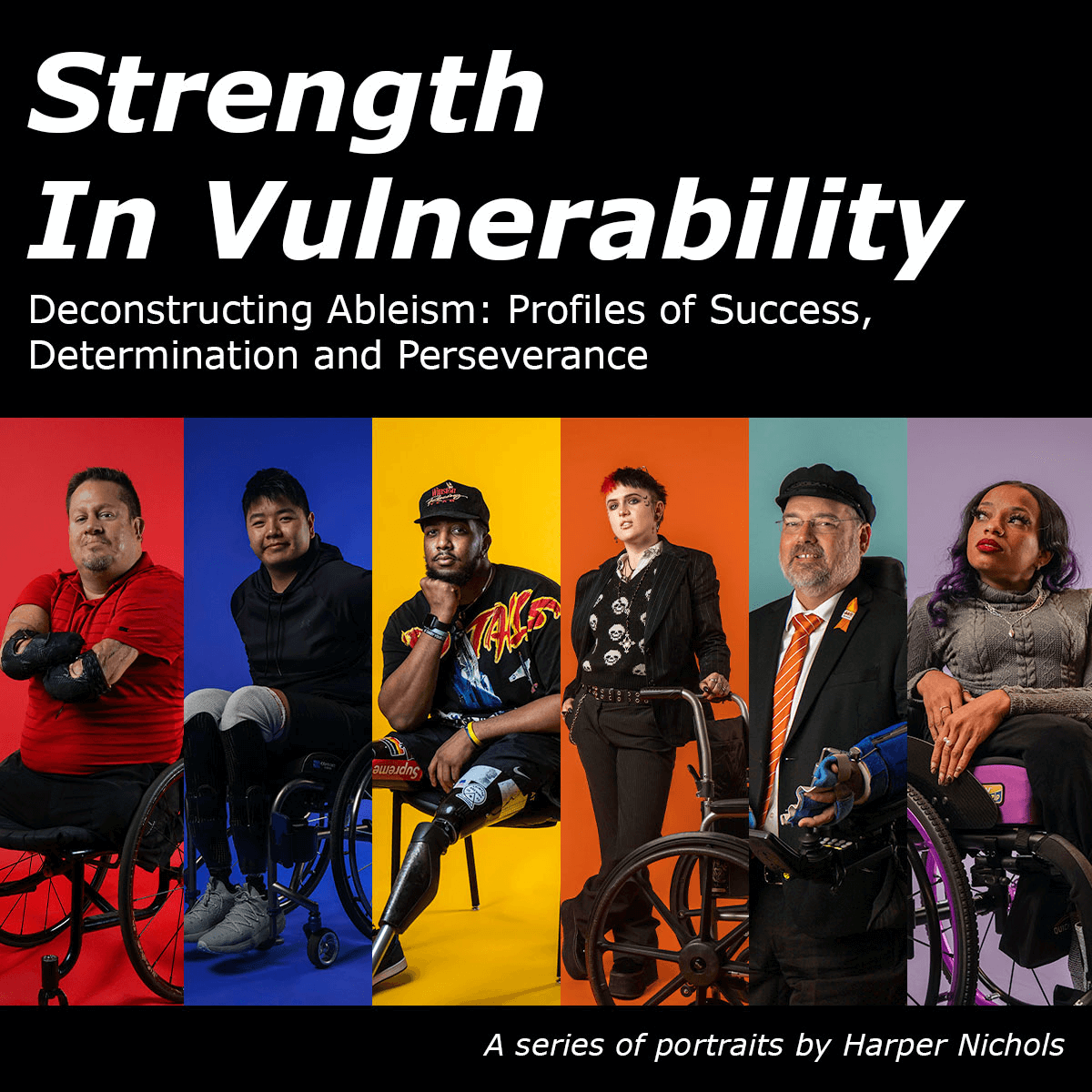Deconstructing Ableism: Profiles of Success, Determination and Perseverance
This exhibit explores how internalized ableism is deeply ingrained in the ways we think about the bodies of people with disabilities. This series peels back inclusion, acceptance, and advocacy to discuss issues that the community continues to face.
“This project has changed the way I think about my own disability,” exhibit creator Harper Nichols said. “I have learned that being vulnerable and open can connect people in a truly meaningful way.”
[00:00] I am Harper Nichols. I have cerebral palsy. And I am a photographer. It affects the right side of my body, specifically my right arm. The thing that I get excited about is like looking through a viewfinder, seeing this image that has been put together and like everything is in place, and all the colors are perfect. And the person is exactly where they need to be. And like, it's that excitement of like, oh, my gosh, I got this perfect image.
[00:27] Because cameras are made to be right handed the shutter is always on the right side, all of the buttons are always going to be on the right side. How do I do this thing that I love, but do it in a way that's not forcing me to do it with my right hand. Because if I were to photograph something with my right hand, it wouldn't be in focus, the camera would fall before I was able to take the picture. So I learned that if I was able to hold it one-handed with the camera on top of my hand, kind of holding the lens of the camera, I could like rotate it and photograph using my left hand pressing the shutter speed.
[01:00] The title of this program is “Strength in Vulnerability. But we are photographing people with different disabilities and hearing, interviewing their experiences growing up with a disability. And then what their experiences have been like with ableism and then internalized ableism. So it's been super interesting.
[01:21] Ableism in its definition, "discrimination in favor of able-bodied people." People can look at somebody who is disabled or somebody who has a disability, and can treat them differently based on their disability. And then internalized ableism, while similar, it just means like those thoughts and the discriminations towards people with disabilities are internalized, and it makes you think about it differently. And this project has definitely brought up some of my own internalized ableism. Being willing to present myself as "Hi, I'm Harper Nichols, I have a disability. I am a person with a disability." That is not something, probably even six months ago, that I would ever be willing to, to introduce myself as. This project has given me a chance to connect personably with people. Before it was, I heard people and I understood people and I understood what people were going through. But I didn't necessarily have the chance to say like, "Hey, I hear you, and I see you, and in whatever capacity that is I'm going through similar things."
[02:27] The photos themselves are going to hang in the WHARF Building as a permanent or temporary collection of photographs. In each participant session, we have interviewed the people and we are taking some of the things that those people say, some of the quotes, some of the experiences that they've had, and using that text quote as maybe the background of the photos, or to go alongside the photos as a way to kind of bring to life the photos. It's not just a photo of somebody with a disability. It is a photo and the experience that this person has had living with a disability.
[03:19] I don't think we're going for happy. I don't think we're going for sad. I think we're going for realistic. I think the last thing we want to do is use the term like "inspiration porn." These are not supposed to be inspirational images. These are not supposed to be inspirational stories. They're supposed to be realistic stories of people who are doing real things in a real community, in a real space, and how they have succeeded in what they're doing. And I'm hoping that it opens a conversation, it opens a door to to having the conversations of, of what is ableism and what is internalized ableism.
Over the last six months, 18 different participants who all live with varying disabilities were photographed and interviewed. Each person spoke openly about their personal experiences living with a disability and dealing with external and internalized ableism.
“These are realistic stories of people who are doing real things — in a real community and a real space — and how they have succeeded,” said Nichols. “I’m hoping that it opens a door to conversations about what is ableism and what is internalized ableism.”

Opening Event
The home of the art exhibition is the Wellness, Health, and Research Facility (WHARF) located on the campus of the Lakeshore Foundation. You will have an opportunity to see the art and meet the artist at the opening night unveiling on January 26, 2023, between 5:00 p.m. and 7:00 p.m.
Directions
The WHARF address is 3810 Ridgeway Dr., Birmingham, Alabama, 35209.